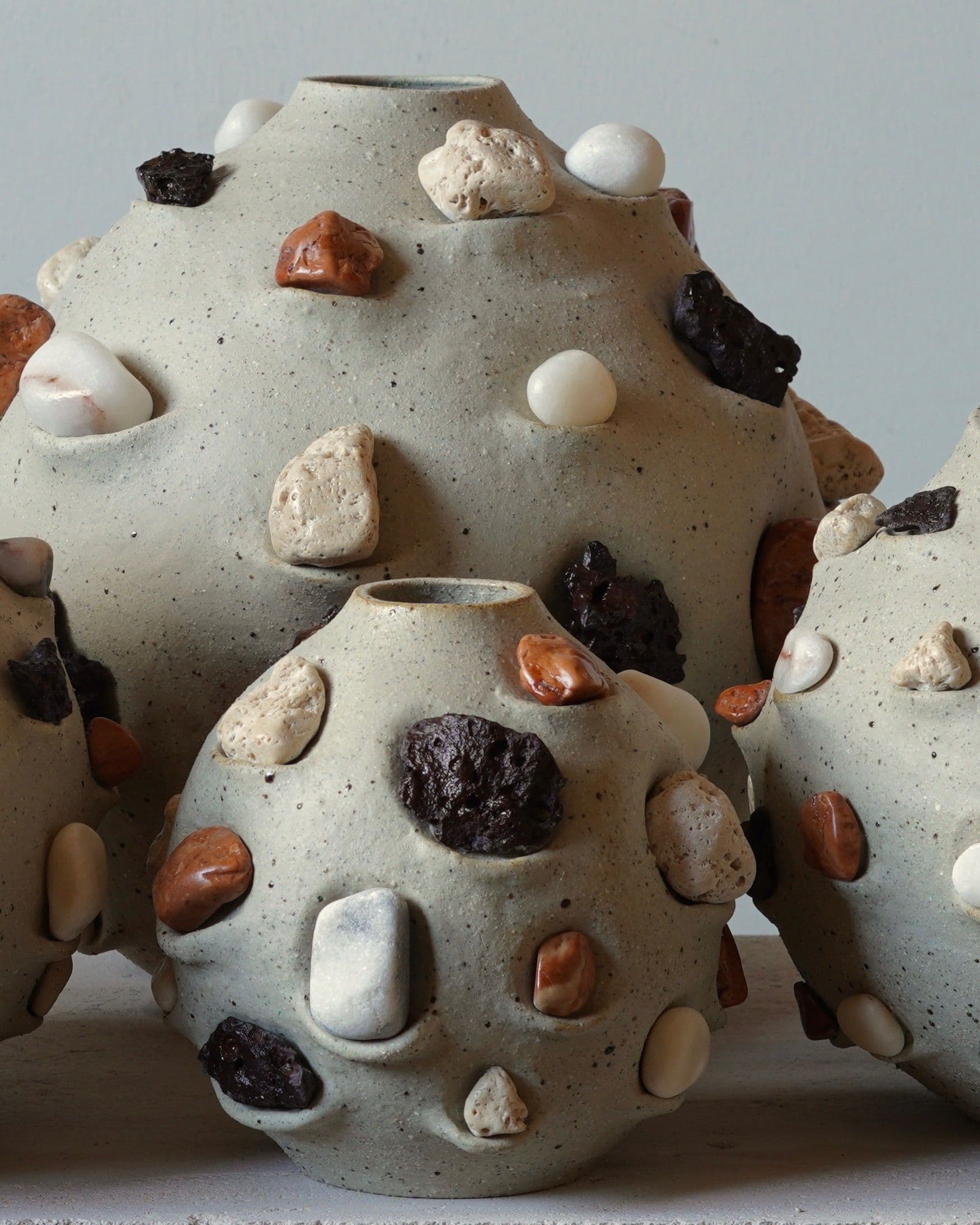When replacing traditional raw materials with waste materials like sink trap waste, eggshells, or basalt by-products, what specific material properties are altered? For instance, do these substitutions affect the water absorption, plasticity, or firing stability of the clay body?
When replacing traditional raw materials with second-life materials in ceramics, various material properties change before and after firing. Ceramic glazes and clay bodies are composed of fluxes, glass formers, and stabilizers, with the ratios of these components varying in each material. These differences affect how materials melt, vitrify, and interact with others, ultimately impacting the stability and appearance of the final piece.
Some materials, such as substituting whiting (calcium carbonate) with fired eggshells in glazes, can be swapped 1:1 with minimal effect, provided they are processed correctly. Other substitutions, like using rust instead of red iron oxide in glazes or crushed bisqueware as grog in clay bodies, may yield similar results, but most substitutions require adjustments to recipes or processes.
Material limitations influence all my design decisions. For example, if a material lacks plasticity, I might use press molding or slip casting. For coarse glaze materials, I would opt for brushing instead of dipping. I select clay bodies based on firing temperature to achieve the desired glaze color or texture. Ultimately, each design choice is guided by the properties and limitations of the materials I work with.

Circular design is central to your work, but what technical considerations come into play when developing ceramic pieces from by-products? How do you test and ensure these materials meet functional and structural requirements?
Considerations for my ceramics include food safety and strength, which vary depending on the type of object (e.g., coasters, decanters, plates, or sculptures). Generally, higher firing temperatures result in stronger work, but this isn’t always necessary. For structural requirements, I create a prototype for trials and test water absorption. If needed, food-safe sealants can be applied to porous items.
I haven’t tested my glazes or materials for food safety due to the cost and the frequent changes in the materials and glazes I use. If a material’s chemistry is unknown and may contain harmful metals, I use a liner glaze with a known composition or a stable, glossy, uncrazed glaze that won’t leach. For materials with a known chemistry, I ensure the alumina-silica ratio of the glaze is properly calculated to prevent leaching at the firing temperature used.

Victorian slate-based glazes are an innovative choice. Can you explain the composition and firing behaviour of these glazes? What challenges do you face in achieving consistency and surface quality when using naturally variable materials?
Slate is primarily composed of silica, aluminum, iron, mica, and calcium, all of which share the same chemistry as various commercially available and traditional ceramic materials. In my testing, I found that when combined with additional glass formers and clay from recycled sources, slate produces an oil-spot glaze identical to the ancient Chinese glaze made more than a thousand years ago. This serves as a reminder that before materials were mined, processed, and purified, ceramics were made entirely from local sources.
Like all ceramic materials, slate’s firing behavior depends on mesh size and temperature, which I select based on the clay body and desired finish. Even when used on its own, slate can create a satin chocolate brown to a rusty matte glaze.
For the MOTHEROCK wine decanters, the slate glaze I developed also incorporates ceramic sink trap waste and recycled glass. It functions at mid-fire and stoneware temperatures. Through multiple rounds of material testing, I selected the highest temperature possible for durability while keeping it low enough to prevent blisters from over-firing the clay body containing sink trap waste.
To reduce testing and improve consistency, I process larger batches of materials (20–30 kg). While I strive for uniformity, I embrace the natural variation in recycled materials and communicate this to clients. I believe this uniqueness adds value to the work, much like artwork or wine that varies year to year, representing an irreplaceable moment in time.
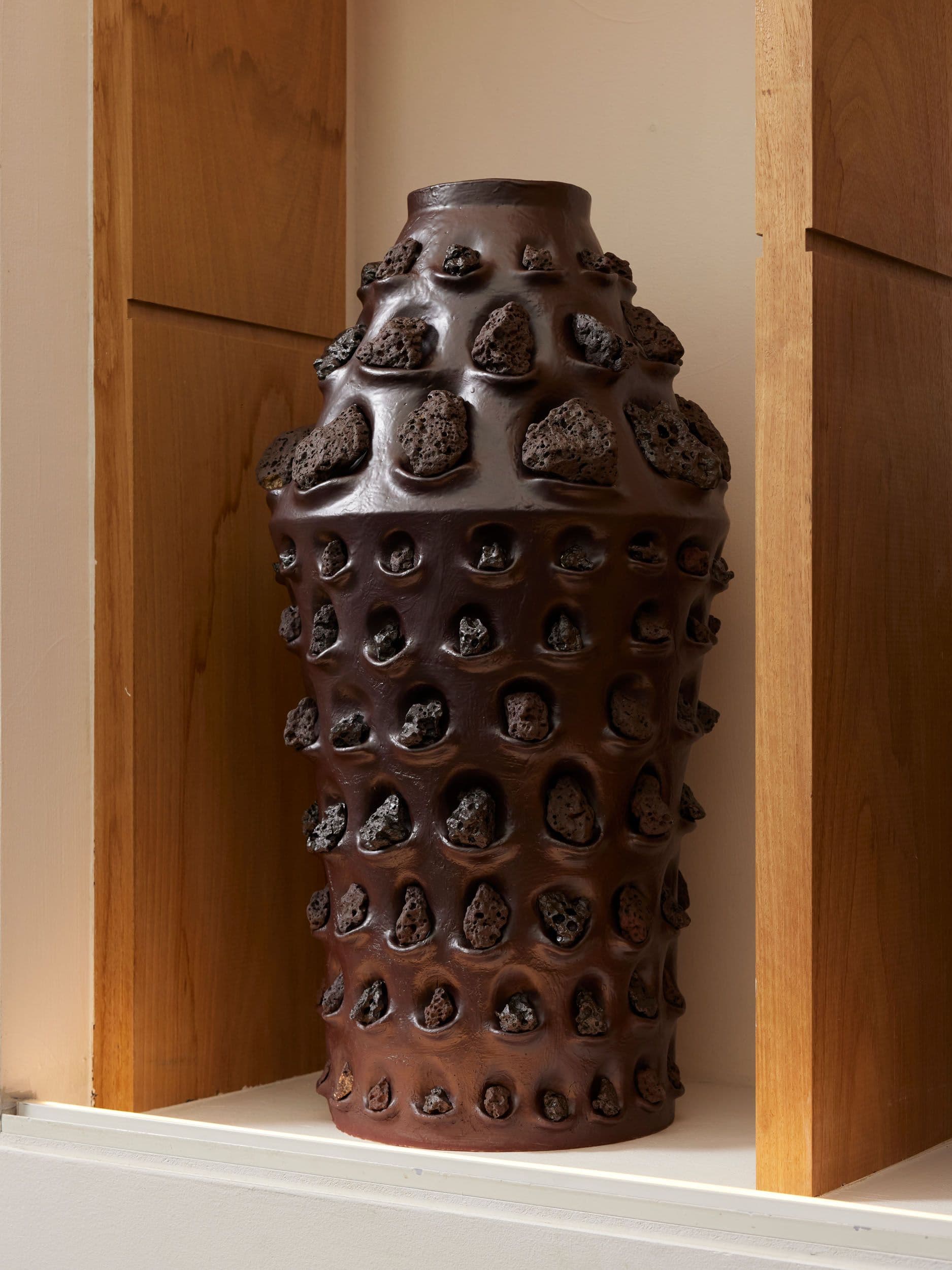
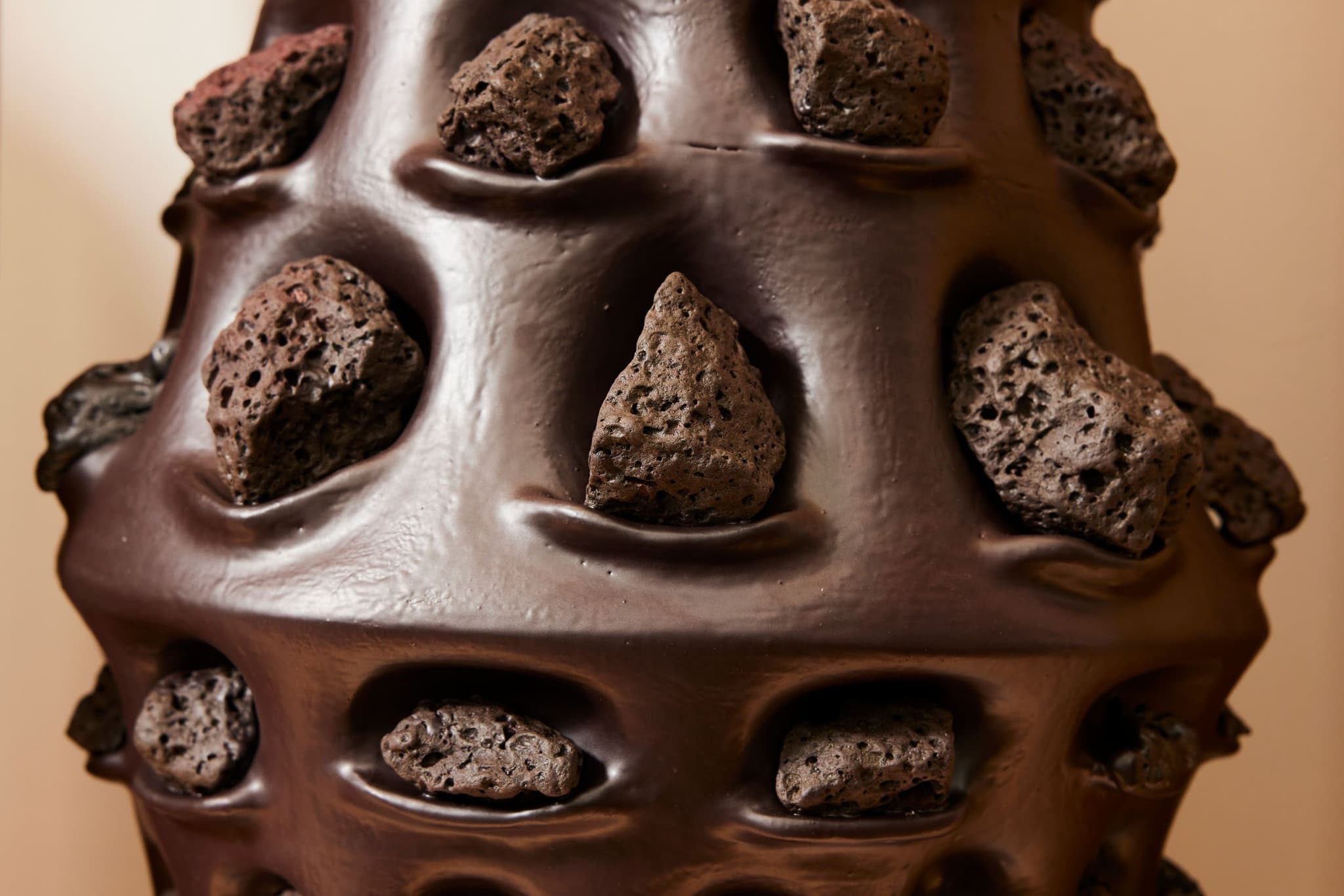
Seeing your materiality-focused innovations ,which design processes—such as using by-products—could you see becoming scalable or transferable to other industries, such as architecture, packaging, or even electronics?
Finding by-product sources with consistent chemistry for scaling can be challenging. However, basalt sludge from quarries, glass sludge from a single supplier, and food waste shells are reliable examples. Beyond consistency, ceramics are ideal for scaling and collaboration because they can be made using materials from almost any industry in their lowest grade—such as sludge or powders—saving both resources and processing time.
Industries that are typically extractive would benefit from exploring local waste streams and by-products by reaching out to businesses to identify surplus materials or recycling challenges that could be solved through collaboration. In addition to positive environmental outcomes, this approach could reduce waste management costs for suppliers while lowering material costs for producers.
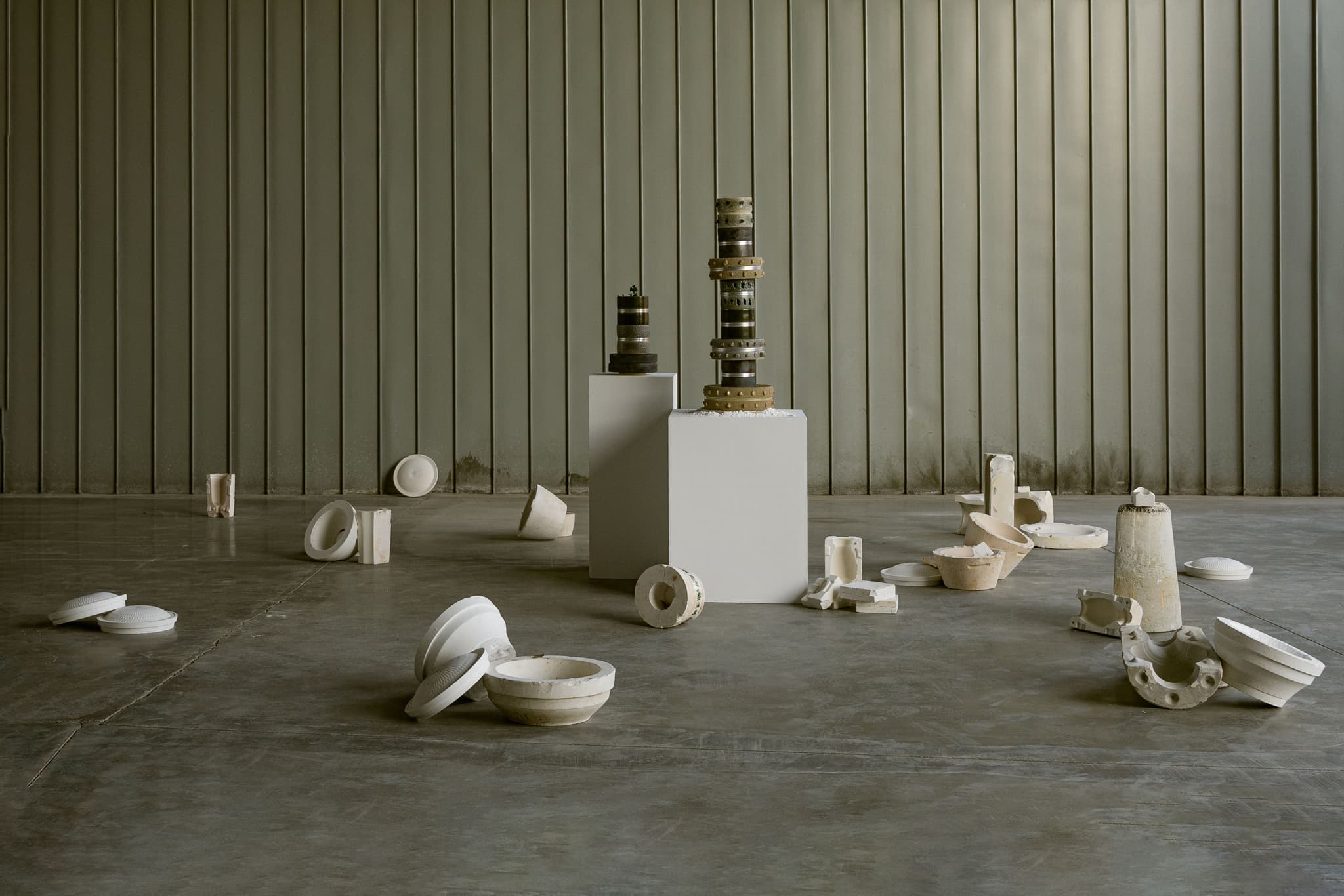
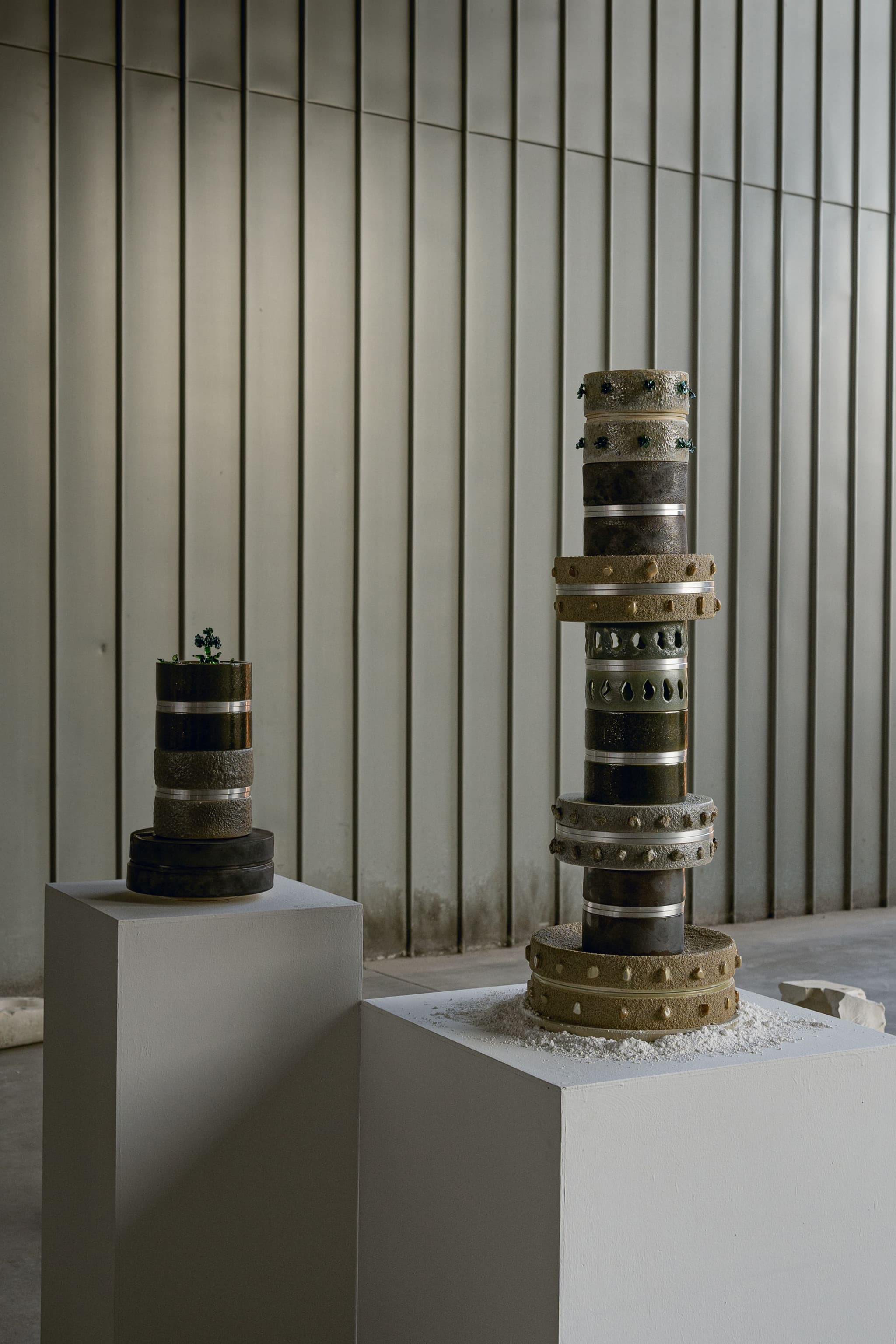
High-temperature firings are energy-intensive. What strategies or techniques are you exploring to optimise kiln efficiency or reduce firing temperatures without compromising material performance or finish quality?
To reduce firing temperatures in past work, I have used a food-safe ceramic sealer called Liquid Quartz, which seals lower-fired, porous ceramics and can even replace glaze. I test materials at lower temperatures first, increasing only if necessary. Aside from restaurant tableware, most projects don’t require the durability of high-fire ceramics. For example, lighting, sculptures, coasters, and clocks don’t need the strength of stoneware.
Every choice involves a compromise. I believe overemphasizing durability and longevity can lead to unintended consequences—much like plastics, which were once seen as a solution for reducing breakage. While aesthetics vary by temperature, with enough testing, most finishes can be achieved.
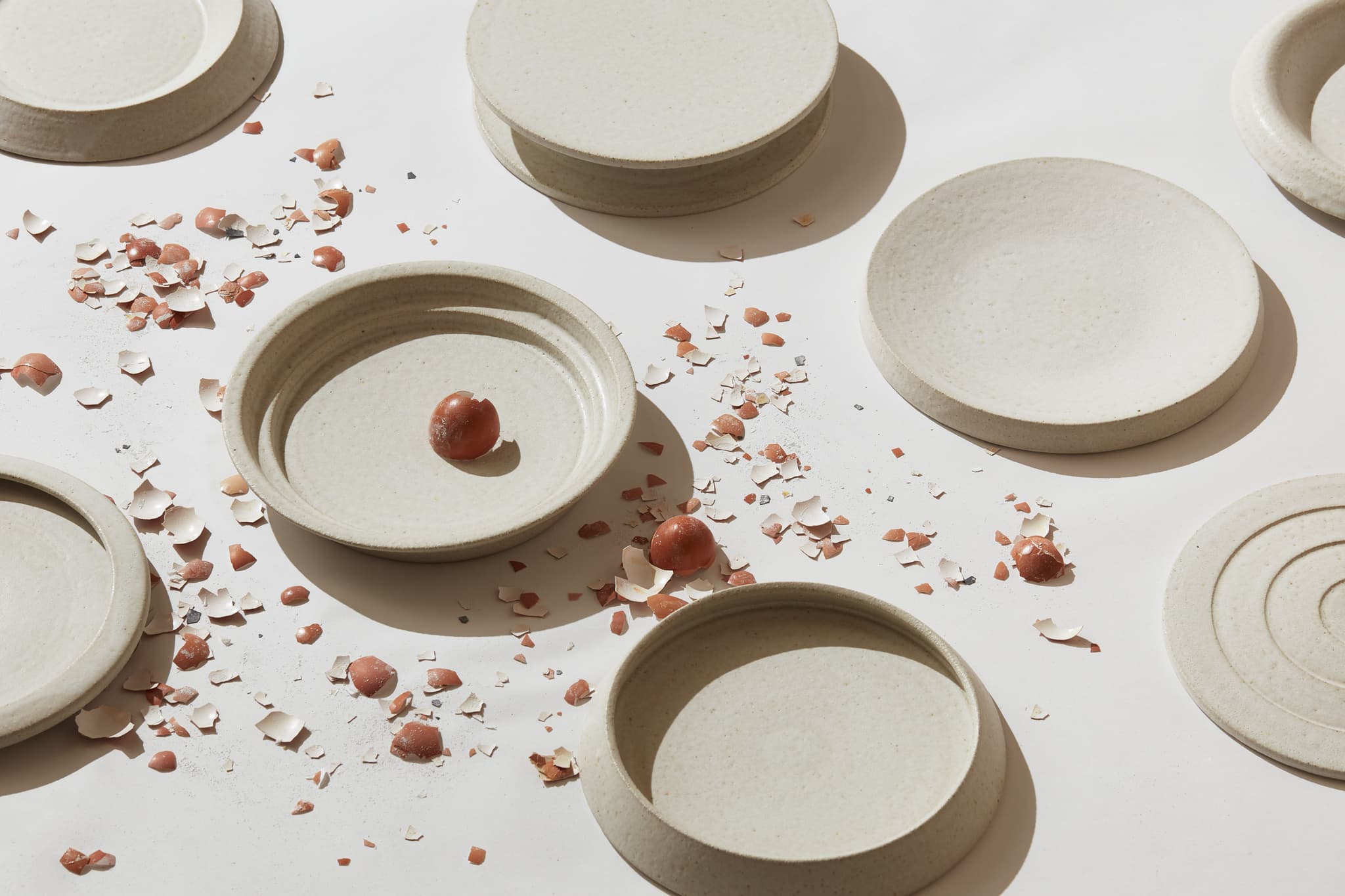
Collaborating with scientists can unlock new opportunities in materials. What aspects of material science—such as composite development, bioceramics, or thermal resistance—would you like to explore in future projects?
I’d love to collaborate with a scientist to develop a circular alternative to pottery plaster from shell waste for mold-making, as well as a recyclable glass-casting plaster that can be crushed and reused. Slip-casting molds typically last for about 100 uses, while glass-casting molds are single-use, generating significant waste.
Ceramic glazes share properties with glass, and I’m interested in creating work entirely from glaze waste. However, the reliance on single-use molds made from virgin materials remains a major barrier for me.

What would an ideal infrastructure for ceramic waste collection and reuse look like in cities? Are there lessons from other industries or regions you think ceramics could adopt to build a cohesive and practical recycling ecosystem?
It would be incredibly helpful to have a broader range of material-specific recycling centers in each state, with bookable collections available for each council. I’ve often imagined a national website where industries, categorized by state, could upload details about available waste streams—such as frequency, quantity, and composition. Artists, designers, and other professionals could then search by material or other criteria and book collection or delivery online.

